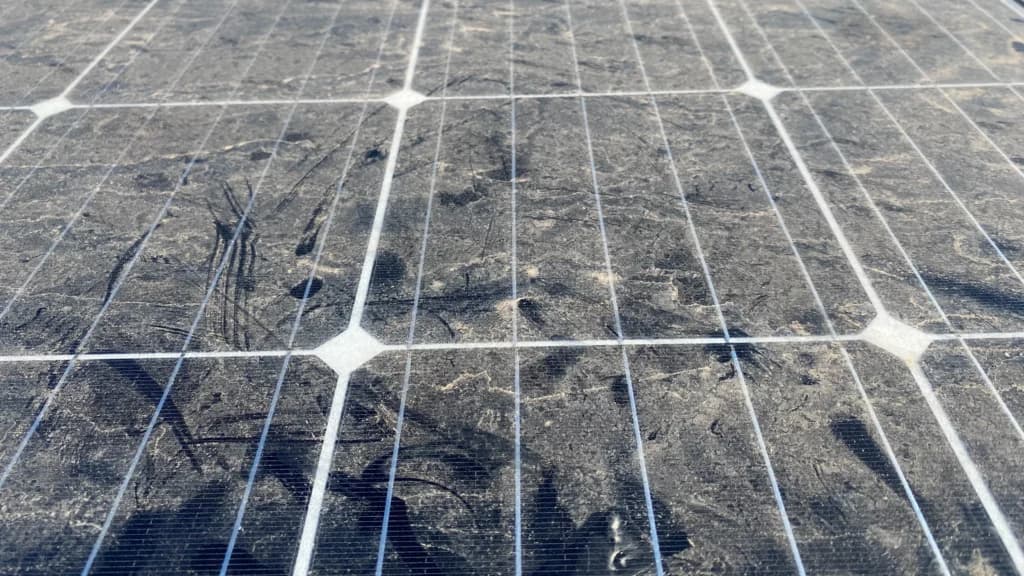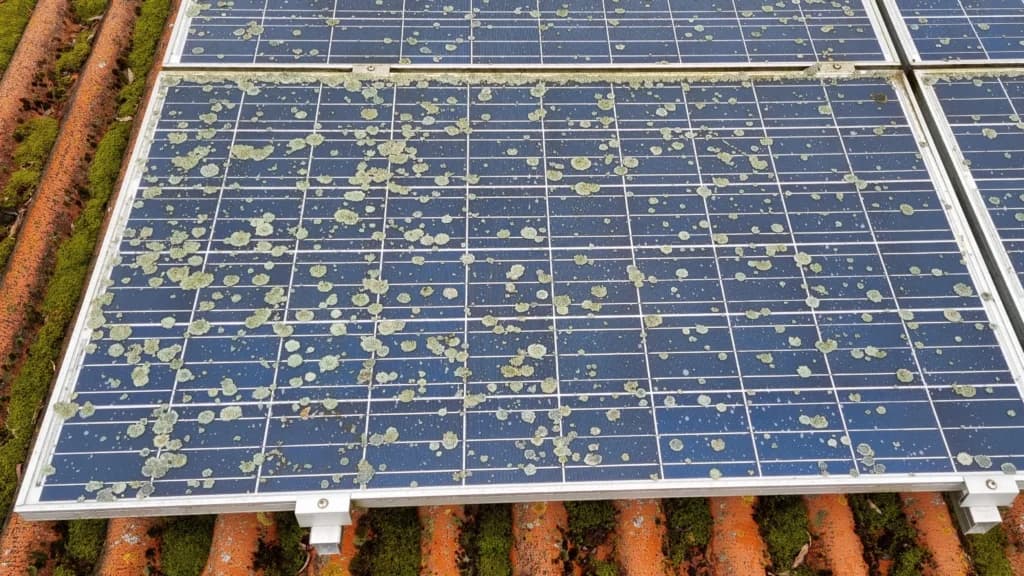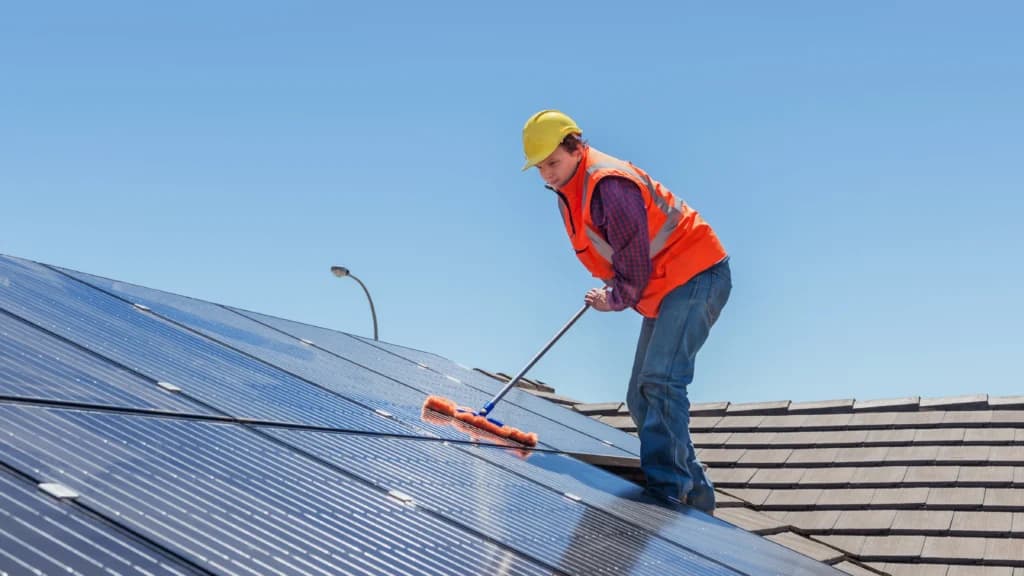
Solar panels work best when they’re clean. Here’s a step-by-step guide to keep them at their most efficient.
Are your solar panels producing as much power as they should? For many homeowners, this answer is surprisingly no, often due to preventable factors like dirt and debris buildup. Regular cleaning helps maximize your system’s energy output, extends the lifespan of your panels, and reduces the chances of performance issues — including rare risks like hot spots or electrical faults.
While it’s best to always follow manufacturer instructions, in this guide, we’ll provide a general overview of how often to clean your panels, what tools to use, and how to do it safely and effectively.
In this article:
- What can happen if you don’t clean your solar panels
- How often, and when, to clean solar panels
- Tools and materials needed for cleaning
- Step-by-step DIY solar panel cleaning
- The benefits of professional solar panel cleaning
- Conclusion
- Frequently asked questions
What can happen if you don’t clean your solar panels
Cleaning your solar panels is critical to maintaining their energy efficiency and prolonging their lifespan. If panels aren’t maintained, it can lead to widespread solar system issues and long-term damage.

Reduced energy output
Dirty or “soiled” solar panels can result in energy losses of around 7% annually in the United States, with some of the most extreme cases — particularly in parts of the Middle East — seeing losses of up to 50%.
Common causes of soiling include dust, pollen, bird droppings, tree sap, and air pollutants. The degree of buildup varies by region. For example, panels in arid climates like Arizona may accumulate dust more quickly than panels in rainier states like Wisconsin.
Reduced panel lifespan and/or voided warranties
If panels stay dirty for too long, they can develop something called “hot spots” — areas on a panel that overheat because certain solar cells stop working properly. This can happen when dirt, leaves, or bird droppings block sunlight to one part of the panel. While the rest of the panel’s cells continue producing power, the shaded or damaged cell resists that energy flow, causing it to heat up much more than the surrounding area. This concentrated heat can wear down your panels, and in rare cases, even contribute to fires if it damages wiring or ignites nearby materials.
Left unchecked, these issues may reduce solar panel efficiency and, in some cases, even void the manufacturer’s warranty. Many warranties require routine maintenance with approved cleaning methods to stay valid. Do-it-yourself maintenance can also void your warranty, so it’s best to contact your installer or the panel manufacturer for specific cleaning guidelines before doing anything.
How often, and when, to clean solar panels
Now that we’ve covered the importance of cleaning your panels, here’s the information you need to create a routine cleaning schedule for your solar panels.
Optimal panel cleaning frequency
Most sources you’ll find recommend that you clean your panels once or twice per year. However, if you live in dustier or “dirtier” areas (such as a desert or deep in the woods, where higher amounts of leaf litter or bird droppings could fall on your panels), you should consider bumping up the cleaning schedule to once every 3-4 months.
Best time of day to clean solar panels
The best time to clean your solar panels is early in the morning or late in the evening when temperatures are cooler. Cleaning during the heat of the day can cause water or cleaning solution to evaporate too quickly, which may leave streaks or mineral deposits behind. In rare cases, the sudden temperature shift from rinsing hot panels with cool water can cause thermal shock, which may lead to surface cracking.
Tools and materials needed for solar panel cleaning
Even if you plan to hire a professional to clean your solar panels, it’s always a good idea to have materials on hand for quick touch-ups or spot cleaning. Here’s what we recommend for effective cleaning without damaging your panels:
- Panel-safe cleansers. These can look different depending on the type of system you have. Qcells recommends using lukewarm water and a microfiber cloth. Canadian Solar advises against using corrosive cleaning solutions, including hydrofluoric acid, alkali, acetone, or industrial alcohol, directly. Always reference the manufacturer’s guide or contact your solar installer for best practices for your specific system.
- Cleaning kits and brushes. Soft bristle brushes are the best option to clean without the risk of scratching or damaging your panels. According to Canadian Solar, you should never scrape or rub dirt away when it’s dry, as this will cause micro-scratches on the glass surface. Microfiber mops, rags, or glass-specific squeegees are also helpful for rinsing and drying.
- Extension equipment (if needed): Choose tools that reduce the need for you to walk on your roof. Common favorites include a long-handled brush or mop, as well as sturdy ladders and pole attachments.
Safety considerations before you start
Before you climb a ladder or start wiping down your panels:
- Check the weather. Avoid cleaning on windy, rainy, or icy days. Roofs can become slick with rain or snow, and wind can throw you off-balance.
- Consider environmental safety. Take a walk around your residence and see where the soapy solution or run-off might fall. You’ll want to make sure it won’t disturb any local flora and fauna, or cause environmental damage. Consider laying tarps or towels to redirect runoff if necessary.
Step-by-step DIY solar panel cleaning
While this is a general summary of the steps you’ll take to clean your solar panels, we always recommend reviewing your manufacturer’s guide or reaching out to your installer to determine what’s right for your specific systems.
- Gather your supplies. It’s much harder to get off the roof than it is to climb up it. Before you get to the roof, check your gear and make sure you have whatever cleaning and safety items you need.
- Turn off your solar system & confirm panels are cool. This is a critical safety step that can’t be missed. Solar panels can get hot quickly, and water and electricity are never a safe mix. Before you attempt to clean your solar panels, make sure everything is fully shut off. You should also allow the panels to fully cool for a few hours before putting water or solution on them.
- Rinse panels with water. This step helps you remove loose dust, which could scratch your panels if you went straight to the scrubbing steps. Water should be room temperature or adjusted to whatever temperature it is outside, as excessively hot water could crack your panels.
- Mix your cleaning solution in a bucket and lightly dampen the brush or sponge. Before you scrub, wring out your sponge or tap off your brush to avoid getting the panel too wet. You want it to be just wet enough to gently remove debris.
- Gently scrub each panel, and dry as you go. Once you scrub and clean one panel, keep a squeegee or microfiber on hand to dry the panel and give it a streak-free shine.
- Allow panels to air-dry completely before turning the system back on. Only power the system back on once all surfaces are fully dry to reduce the risk of shock or short circuits.
Tip: According to the American Solar Energy Society (ASES), you should avoid kneeling or walking on panels, unless the manufacturer has noted they are designed to be walked on. While you may not see the damage, it’s easy to crack solar panels when walking or kneeling on them.
Special cases & troubleshooting
Sometimes, things don’t go to plan. Whether you’re dealing with stubborn bird droppings or you’re scrubbing out a mineral stain, here are some tips to get clean panels.

Stuck-on stains
Stubborn, sticky stains from things like bird droppings, tree sap, or bug residue, can be difficult to get off your solar panels. Many homeowners find luck with a wet microfiber cloth or mop head that’s been soaked in a soapy purified water solution. Instead of scrubbing roughly at the panel, it’s best to let the solution fully saturate the area, then gently wipe it off when it turns soft.
Tougher build-up, like tree sap, may require a bit of gentle detergent (like Dawn) and a soft bristle brush to fully come off. Avoid abrasive tools or harsh solvents, which can compromise panel coatings or void the manufacturer’s warranty.
Moss and algae
Moss and algae are commonly found on roofs and panels under extreme shade or tree cover. While you can use diluted isopropyl alcohol (about a 1:4 dilution of alcohol to deionized water ratio) and a bristle brush to scrub it away and kill it, many opt for formulated cleaners to avoid solar panel damage from too strong of a solution.
Hard water spots
Hard water spots are caused by the evaporation of water with particularly high mineral content, and are very common to see on solar panels. Since precipitation comes from lakes, puddles, oceans, and other water sources, any residue left by rain, snow, or ice can leave stains on your panels.
The diluted vinegar solution mentioned earlier (approximately 5-10% vinegar mixed with purified water) is a safe way to rid your panels of these spots — the acidity of the diluted vinegar helps dissolve and remove the mineral deposits left behind.
The benefits of professional solar panel cleaning
Considering whether professional or DIY solar cleaning is right for you? There are pros and cons to both. The primary benefit of DIY cleaning is that you save money, but it can be risky depending on the height and slope of your roof, especially for those who don’t have the correct safety gear or experience.

When to hire a professional solar panel cleaner
Many homeowners choose to hire a professional at least once a year. It’s especially recommended if you have technically challenging roof architecture, a multi-story home, a severe roof pitch, or hard-to-reach panels (like those mounted on carports).
You should also consider regional regulations for solar panels. For example, your community (i.e., a town or an HOA) may require a licensed, insured, and bonded contractor to clean them.
It’s also worth noting that if your system is leased or part of a power purchase agreement (PPA), cleaning may be included in the provider’s operations and maintenance (O&M) services. And since leased and PPA systems are owned by a third-party, never do anything to the panels without contacting the company that owns your system first.
What professional solar cleaning offers
In addition to convenience and a reduced risk of injury, professional panel cleaners come ready with the right tools for the job. Many professionals use deionized or purified water (for a residue-free clean), soft-brush robotic tools (handy for bigger systems), or even thermal imaging tools that map micro-cracks in your system during the inspection phase of your clean.
Costs of professional solar panel cleaning and what to ask
Solar panel cleaning costs vary depending on several factors, including the difficulty of the job, the number of panels you’re having cleaned, and whether you request a same-day inspection. Most homeowners can expect to pay about $10-$20 per panel. Contractors may also have additional fees or minimum prices for a job, and those prices may vary by region.
Conclusion
Regular cleaning helps maximize your solar panel performance, extend your system’s lifespan, and protect your investment. Before getting started, always check your manufacturer’s recommendations, get in touch with your installer, and use products that are safe for your specific setup.
If you’re not sure whether DIY or professional cleaning is right for your home, it’s best to contact a qualified local solar maintenance provider, especially for hard-to-reach or roof-mounted systems. They’ll have the tools and training needed to clean your system safely and effectively.
And if you don’t have solar yet but are doing your homework early, Aurora Solar can help you connect with multiple vetted installers — all with upfront estimates on pricing and bill savings.
Frequently asked questions
What materials and tools do I need to clean solar panels effectively?
The materials you need to clean your panels depend on the type of panels you have. However, most people clean their panels with mild soap, a squeegee, a soft bristle brush or mop head, a bucket, an extension pole, and a ladder.
How often should solar panels be cleaned to maintain optimal efficiency?
It’s generally best to clean your solar panels every six months, or more often if you live in drier and dustier climates. However, homeowners in relatively wet or windy climates may choose to clean them every 12 months.
Is it safe to clean solar panels on my own, or should I hire a professional?
While you can clean solar panels yourself, it’s generally best to hire a professional. Climbing on roofs is risky, especially if you’re inexperienced and don’t have the right equipment. Professionals will come ready with the tools and chemicals needed to do the job safely and are able to follow your panels’ precise cleaning instructions to a tee.

